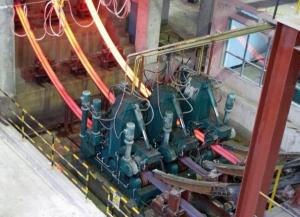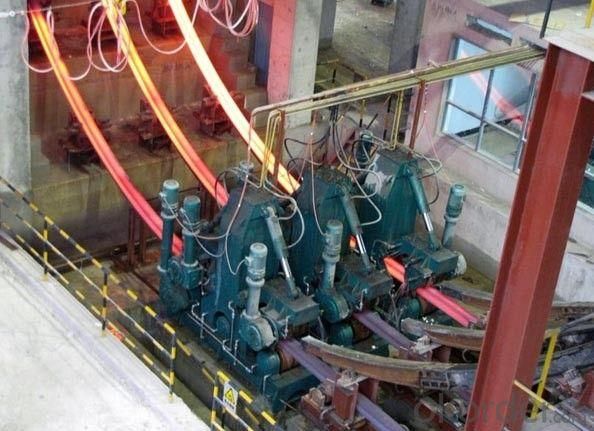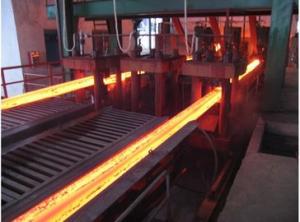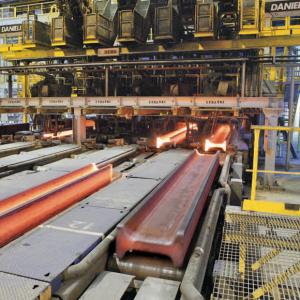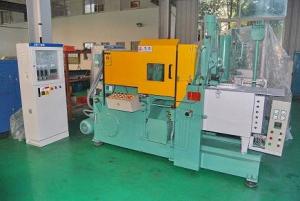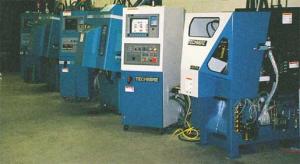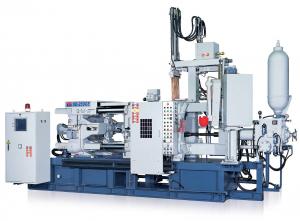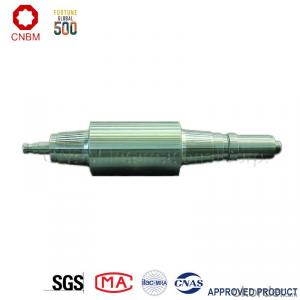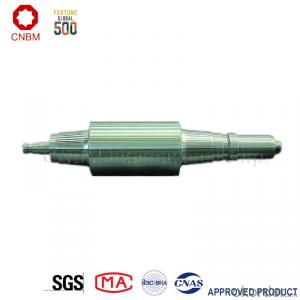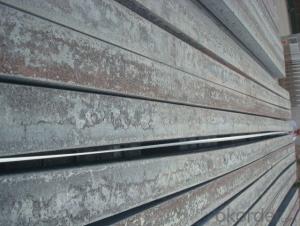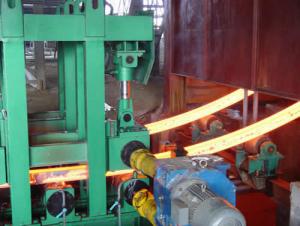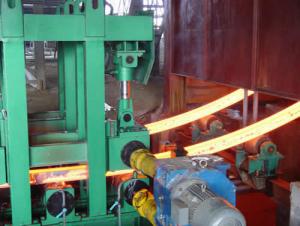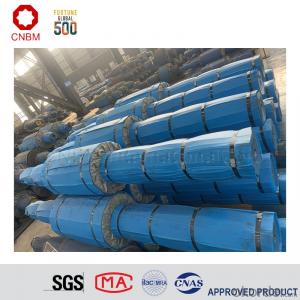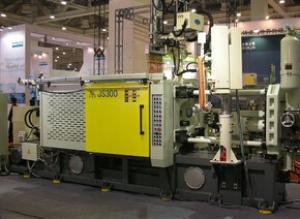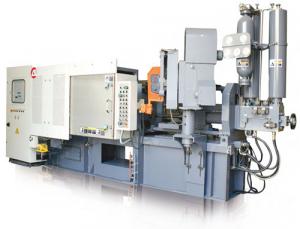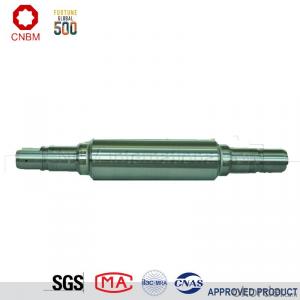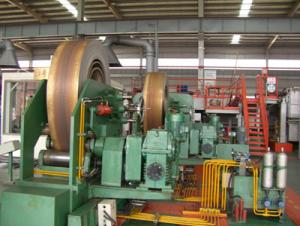Continuous Casting Machine for Steel Billet
- Loading Port:
- China Main Port
- Payment Terms:
- TT or LC
- Min Order Qty:
- 1 Set set
- Supply Capability:
- 30 Sets Per Year set/month
OKorder Service Pledge
Quality Product, Order Online Tracking, Timely Delivery
OKorder Financial Service
Credit Rating, Credit Services, Credit Purchasing
You Might Also Like
Technology process:
1.Heat the EVA film
2.Cover the heated EVA film on the mould(can be made from wood or aluminum)
3.Spray a coating in a certain baume degree
4.Put on the empty blask
5.Sand-up the flask and vibrate to compaction
Packaging & Delivery
Packaging Details:containers
Delivery Detail:Complete one set of equipment needs for three months
- Q: How is the sand reclaimed and reused in metal casting machinery?
- In metal casting machinery, sand can be reclaimed and reused through a process called sand reclamation. This involves removing the used sand from the casting equipment, separating any contaminants or impurities, and then treating it to restore its properties for reuse. The reclaimed sand is typically cleaned, dried, and blended with new sand to create a mixture suitable for molding and casting processes. This recycling process helps to conserve resources, reduce waste, and improve the overall sustainability of metal casting operations.
- Q: How is the temperature controlled in the furnace of metal casting machinery?
- The temperature in the furnace of metal casting machinery is typically controlled using a combination of sensors, thermocouples, and computerized systems. These systems continuously monitor and adjust the temperature to ensure it remains within the desired range for the specific metal being cast. Heat is generated through the combustion of fuel, such as natural gas or oil, and the burner system is regulated to control the heat output. Additionally, insulation materials are used to retain heat and prevent temperature fluctuations.
- Q: How is the metal poured into the mold using metal casting machinery?
- Metal casting machinery is used to pour metal into the mold, a process known as pouring. This involves melting the metal in a furnace until it becomes liquid. Once the metal is molten, it is then transferred to a specialized container called a crucible. To transfer the molten metal from the crucible to the mold, the metal casting machinery is equipped with a ladle or pouring device. This ladle or pouring device is carefully positioned directly above the mold cavity. To control the flow of metal, the ladle or pouring device has a stopper mechanism that can be opened or closed as needed. When the stopper is opened, the molten metal flows out of the ladle and into the mold. The speed at which the ladle is tilted or the size of the opening in the stopper mechanism can be adjusted to control the flow. It is essential to note that the pouring process requires precision and careful monitoring. The metal casting machinery is often equipped with sensors and controls to ensure that the right amount of metal is poured into the mold at the correct temperature. This is crucial for achieving the desired quality and integrity of the final cast product. After the metal has been poured into the mold, it is left to cool and solidify. Once solidified, the mold is opened, and the newly cast metal part is removed. Additional finishing processes may be necessary, such as removing excess material or applying surface treatments, to achieve the desired final product.
- Q: What are the different types of casting defects that can occur in sand casting?
- Some of the common types of casting defects that can occur in sand casting include shrinkage defects, porosity, misruns, cold shuts, sand inclusion, and metal penetration.
- Q: What are the different types of risering systems used in metal casting machinery?
- There are several different types of risering systems used in metal casting machinery, each designed to optimize the casting process and ensure the production of high-quality metal castings. Some of the most commonly used risering systems include: 1. Top Riser System: In this system, a single riser is placed on the top of the casting. It is primarily used for small to medium-sized castings and is effective in reducing the chances of shrinkage defects. The top riser provides a constant metal supply to compensate for the shrinkage during solidification. 2. Side Riser System: In the side riser system, additional risers are placed on the sides of the casting. This system is often used for larger and more complex castings to ensure a consistent metal supply throughout the solidification process. Side risers help in reducing porosity and shrinkage defects by providing an alternative pathway for liquid metal to flow. 3. In-Gate Riser System: This system involves the use of in-gate risers, which are connected directly to the casting through a gating system. The in-gate riser allows for controlled feeding of molten metal to compensate for solidification shrinkage. It is commonly used in processes like sand casting and investment casting. 4. Bottom Riser System: In the bottom riser system, a riser is placed at the bottom of the casting. This system is effective in compensating for shrinkage defects in heavy castings or castings with thick sections. The bottom riser provides a constant supply of molten metal to counteract the shrinkage during solidification. 5. Hot Spot Riser System: This system involves the placement of risers at specific locations known as hot spots. Hot spots are areas of the casting that tend to solidify last due to higher heat loss. By placing risers in these areas, the hot spot riser system ensures a constant supply of molten metal, preventing shrinkage defects and ensuring uniform solidification. Each risering system has its own advantages and is chosen based on the specific requirements of the casting process, such as the size, geometry, and material being cast. The selection of the appropriate risering system is crucial in achieving defect-free and high-quality metal castings.
- Q: How does metal casting machinery handle the removal of casting molds?
- Metal casting machinery handles the removal of casting molds through a process called shakeout. Shakeout is the method used to separate the casting from the mold after the metal has solidified and cooled down. There are several ways in which metal casting machinery can handle this process. One common method is by using vibrating equipment. The casting molds are placed on a vibrating conveyor or table, which shakes and vibrates at a high frequency. This motion helps to loosen the sand or other molding material from the casting, allowing it to be easily separated. Another method involves the use of knockout pins. These pins are inserted into the mold prior to pouring the molten metal. Once the metal has solidified, the pins are activated, causing them to push against the mold and dislodge it from the casting. This method is often used for more complex molds or for large castings. In some cases, metal casting machinery may also use mechanical or hydraulic methods to remove the casting mold. Mechanical devices such as wedges, levers, or hydraulic cylinders can be used to exert force on the mold, breaking it apart and freeing the casting. These methods are particularly useful for molds that are difficult to shake out or for castings with intricate shapes. Overall, metal casting machinery employs various techniques to handle the removal of casting molds. Whether it's through shaking, the use of knockout pins, or mechanical and hydraulic methods, the goal is to efficiently and effectively separate the casting from the mold, allowing for further processing and finishing of the metal component.
- Q: Can metal casting machinery be used to make complex shapes?
- Metal casting machinery has the capability to produce intricate shapes. This versatile manufacturing process enables the creation of detailed parts. The machinery involved, including molds and patterns, can be designed to form molds with elaborate shapes and intricate details. These molds are subsequently filled with molten metal, which solidifies to replicate the mold's shape. Through the use of advanced technologies and skilled craftsmen, metal casting machinery can generate complex shapes with exceptional precision and accuracy. Consequently, metal casting is highly suitable for the production of intricate components utilized in diverse industries, including automotive, aerospace, and medical devices.
- Q: What are the different types of shakeout and cleaning processes used with metal casting machinery?
- There are several types of shakeout and cleaning processes used with metal casting machinery. Some common methods include mechanical shakeout, where the castings are mechanically shaken to remove sand and other debris; thermal shakeout, which involves heating the castings to remove the sand through thermal expansion; shot blasting, where high-speed projectiles are used to remove scale and other contaminants from the castings; and acid cleaning, which uses acid solutions to dissolve and remove any remaining impurities on the castings' surfaces. These processes help ensure that the castings are free from any unwanted materials before further processing or finishing.
- Q: How do you stay updated on the latest developments and innovations in metal casting technology?
- To stay updated on the latest developments and innovations in metal casting technology, there are several effective strategies that one can employ. First and foremost, it is crucial to actively engage with industry publications and journals that focus on metal casting. Subscribing to these publications and regularly reading articles and research papers can provide valuable insights into the latest advancements in the field. Some well-known publications in the industry include the International Journal of Metalcasting, Metal Casting Design & Purchasing, and Foundry Trade Journal. Attending relevant conferences, trade shows, and exhibitions is another effective way to stay updated on the latest developments in metal casting technology. These events often feature keynote speeches, technical sessions, and exhibitions where industry experts and companies showcase their innovations. In addition to gaining knowledge from presentations and discussions, attending these events also provides an opportunity to network with professionals and learn from their experiences. Joining professional organizations and associations related to metal casting can also be highly beneficial. These organizations often organize workshops, seminars, and webinars that focus on the latest advancements in the field. Engaging with fellow professionals through these platforms allows for knowledge sharing and staying updated on the current trends and developments. Utilizing online resources such as industry-specific websites, blogs, and forums is another effective way to stay updated. Many companies and experts in the field maintain websites or blogs where they regularly share insights, case studies, and news related to metal casting technology. Participating in online forums and discussion boards dedicated to metal casting can also provide a platform for exchanging ideas, discussing advancements, and learning from others in the industry. Lastly, building a network of contacts within the metal casting industry is crucial for staying updated. Regularly attending industry events, engaging in discussions with professionals, and actively participating in online communities can help establish and nurture these connections. By fostering relationships with experts and peers, one can gain access to insider knowledge, industry updates, and the latest innovations in metal casting technology. In summary, staying updated on the latest developments and innovations in metal casting technology requires a proactive approach. Engaging with industry publications, attending conferences and exhibitions, joining professional organizations, utilizing online resources, and building a network of contacts are all effective strategies to ensure one remains informed and up-to-date in this ever-evolving field.
- Q: How can energy consumption be reduced in metal casting machinery?
- Energy consumption in metal casting machinery can be reduced through several methods. Firstly, optimizing the design and layout of the machinery can minimize energy losses. This can involve improving insulation, reducing heat transfer, and utilizing advanced cooling systems. Secondly, adopting energy-efficient technologies such as variable frequency drives (VFDs) and energy recovery systems can significantly reduce energy usage. Additionally, implementing efficient control systems and automation can help optimize energy usage during different stages of the casting process. Regular maintenance and monitoring of machinery can also identify and address energy inefficiencies. Lastly, employee training and awareness programs can promote energy-conscious behavior and encourage operators to make energy-saving choices.
Our professions include metallurgical technology, equipment and automation. We can provide the best solutions to the production process, design & manufacture of equipment and electrical automation regarding various industries in domestic and foreign districts with exquisite technology and fine quality service. We can provide all-around services to customers from development & design to the provision, installation and running of products.Strong technical strength, advanced equipment manufacturing technology, fine quality professional talents, and perfect service systems all bring about reliability, relaxation, convenience and delight to the cooperation with customers from beginning to end.
1. Manufacturer Overview
| Location | Jiangsu,China (Mainland) |
| Year Established | 2000 |
| Annual Output Value | |
| Main Markets | South America Eastern Europe Southeast Asia Africa Mid East South Asia Domestic Market |
| Company Certifications |
2. Manufacturer Certificates
| a) Certification Name | |
| Range | |
| Reference | |
| Validity Period |
3. Manufacturer Capability
| a) Trade Capacity | |
| Nearest Port | SHANGHAI |
| Export Percentage | 21% - 30% |
| No.of Employees in Trade Department | 3-5 People |
| Language Spoken: | English, Chinese |
| b) Factory Information | |
| Factory Size: | |
| No. of Production Lines | |
| Contract Manufacturing | |
| Product Price Range | |
Send your message to us
Continuous Casting Machine for Steel Billet
- Loading Port:
- China Main Port
- Payment Terms:
- TT or LC
- Min Order Qty:
- 1 Set set
- Supply Capability:
- 30 Sets Per Year set/month
OKorder Service Pledge
Quality Product, Order Online Tracking, Timely Delivery
OKorder Financial Service
Credit Rating, Credit Services, Credit Purchasing
Similar products
Hot products
Hot Searches
Related keywords
